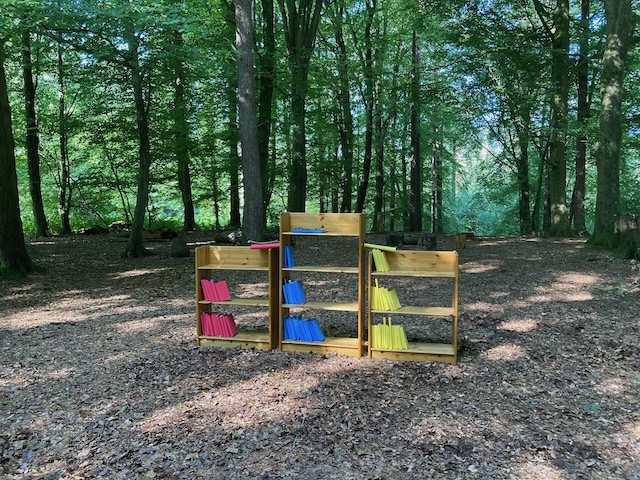The bookshelf analogy is an important model in the Regenerative Design Lab. And so perhaps you might be asking what is on our book shelves?
Well, when new members join the Lab they get a copy of the Regenerative Structural Engineer. (Broadbent, O. and Norman, J., 2024. The Regenerative Structural Engineer. London: The Institution of Structural Engineers.). James and I wrote this having read most of the other books on this list below. The book is our attempt to distill all this (and other) thinking and present the concepts in an order that helps us think about how practice as designers (not just structural engineers!).
But of course, we would encourage lab members and people following the Lab to read beyond what we have to say on the topic. So here is the regenerative design reading list.
Places to start your reading
*Hopkins, R., 2019. From What Is to What If: Unleashing the Power of Imagination to Create the Future We Want. White River Junction: Chelsea Green Publishing.
How the climate crisis is a crisis of the imagination and what the work is we need to do to imagine a thriving future. A brilliant, far-seeing book, with an excellent podcast series to accompany it.
Kimmerer, R.W., 2013. Braiding Sweetgrass: Indigenous Wisdom, Scientific Knowledge, and the Teachings of Plants. Minneapolis: Milkweed Editions.
This book creates a bridge between Indigenous and scientific thinking. The short essay format makes this an easy book to dip into and return to.
*Meadows, D.H., 2008. Thinking in Systems: A Primer. Edited by D. Wright. White River Junction: Chelsea Green Publishing.
A great way into systems thinking, and for the early members of the lab, the way into exploring regenerative design, even though these are not terms Meadows uses.
*Raworth, K., 2017. Doughnut Economics: Seven Ways to Think Like a 21st-Century Economist. London: Random House Business.
The book that launched the model linking social foundations with planetary boundaries, it is full of clear-thinking models for breaking free of the unlimited-growth paradigm.
*Wohlleben, P., 2017. The Hidden Life of Trees: What They Feel, How They Communicate – Discoveries from a Secret World. Translated from German by J. Billinghurst. London: William Collins.
Sheds light on how trees communicate with each other, collaborate and work with shared intelligence. Shows how living systems are interconnected and use feedback loops to respond to environmental change. Helps us shift from an anthropocentric to ecocentric view of how ecosystems work.
Digging deeper into the regenerative theory
Capra, F. and Luisi, P.L., 2014. The Systems View of Life: A Unifying Vision. Cambridge: Cambridge University Press.
[Dense with models and systems theory – under review!]
Fleming, D., 2016. Lean Logic: A Dictionary for the Future and How to Survive It. Edited by S. Chamberlin. White River Junction: Chelsea Green Publishing.
This book is a whole world! A vast exploration of how we can thrive when resources are scarce. Rich with examples and models that translate well into a regenerative framing. Available also as an online, searchable reference. See https://leanlogic.online
Mang, P. and Reed, B., 2012. Regenerative Development and Design: A Framework for Evolving Sustainability. Hoboken: John Wiley & Sons.
An incredible practical guide to regenerative architecture with a particular focus on place-based design.
Pawlyn, M. and Ichioka, S., 2021. Flourish: Design Paradigms for Our Planetary Emergency. London: Triarchy Press.
Explores regenerative design from different paradigms and introduces in particular the idea of ‘possibilism’, an important framing for shifting the way we think about the future we want to build. Another book with an excellent podcast series to accompany it.
Wahl, D.C., 2016. Designing Regenerative Cultures. Axminster: Triarchy Press.
Last but definitely not least, the definitive text on regenerative design, it requires some confidence in systems thinking to get the most out of it. I keep returning to and finding more and more depth in.
We will continue to update this list as the Lab evolves.

